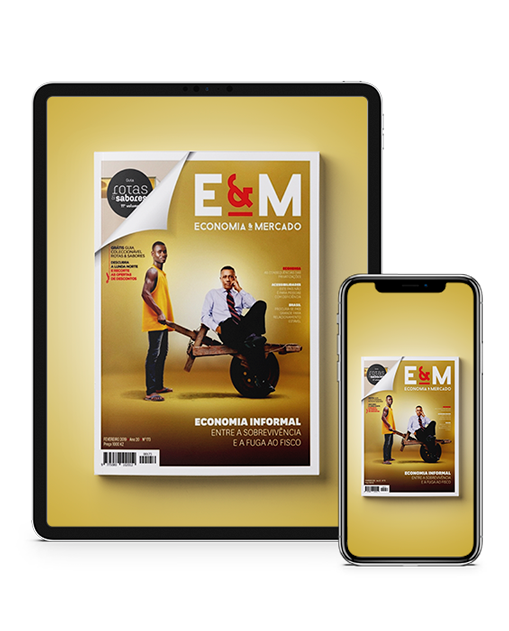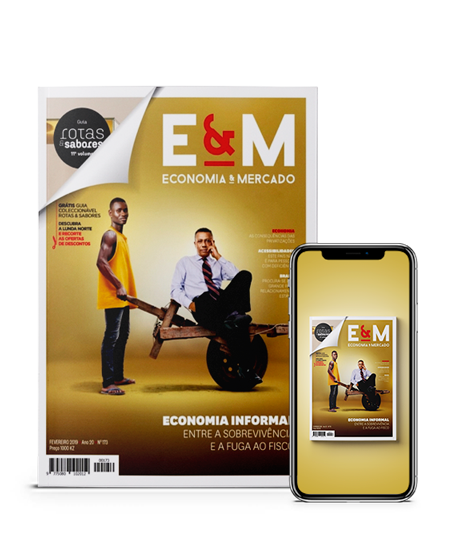Sustentados pelas Estatísticas da Base Monetária divulgadas pelo Banco Nacional de Angola (BNA), os dados preliminares indicam que as notas e moedas em circulação rondaram, em média, 614 496 milhões Kz em Junho deste ano, contra os 589 587 milhões registados em Junho de 2022.
Desde o início deste ano, a quantidade de moeda em circulação na economia aumentou 3%, tendo-se registado o ponto mais baixo de 595 627 milhões Kz, depois de atingir o pico de 657 852 milhões Kz em Dezembro de 2022.
De Janeiro a Março de 2023, as notas e moedas em circulação apresentaram uma tendência de crescimento e fixaram-se nos 623 019 milhões Kz em Março, no mês seguinte registou-se a primeira redução de 2%, porém um novo aumento foi registado em Maio para 629 555 milhões Kz. Dados preliminares apontam para uma redução de 2% em Junho, face a Maio.
Segundo o economista Pedro Yala, em regra, a moeda em circulação aumenta quando se verifica um aumento da riqueza nacional, renovação da moeda em circulação ou quando há uma supervalorização desta. Contudo, não foi o caso da realidade angolana, pois a instabilidade da moeda, reflectida na limitação de aquisição de bens e serviços, levou o governo a “tentar compensar” com o aumento do papel-moeda em circulação. A intenção seria o incentivo ao consumo que poderia levar ao aumento da produção.
“Mas, com uma economia dependente das importações, os estímulos ao consumo acabam por criar pressões no mercado financeiro, pois os agentes importadores acabam por demandar mais divisas e mais kwanzas para adquirir mais divisas, abrindo o ciclo vicioso que pode levar (e levou) ao acentuar da desvalorização da moeda nacional frente ao Dólar e ao Euro”, sustentou.
Para Euriteca Nunes, também economista, o crescimento verificado resulta do aumento dos custos de produção, agravamento da taxa de câmbio e a subida dos preços dos combustíveis.
Acrescenta que esta variação leva a um aumento nos preços dos bens e serviços, à desvalorização da moeda e ao desestímulo de realizar investimentos decorrentes das incertezas em relação aos rumos da economia nacional.
“O facto de o aumento do nível de moeda em circulação ser fruto do aumento dos custos de produção e dos preços de bens e serviços traz o aumento do custo de vida e, consequentemente, a redução do poder de compras das famílias, situação que impacta de forma negativa na actividade e nos resultados das empresas”, afirmou.
O comportamento da moeda em circulação, disse, tem gerado impactos económicos e sociais negativos, por um lado, pela dependência de importação das matérias-primas, factores de produção e mercadorias; por outro, pelo facto de esse aumento não ser acompanhado por actualizações salariais e pelo crescimento da economia nacional.
Leia o artigo completo na edição de Agosto, já disponível no aplicativo E&M para Android e em login (appeconomiaemercado.com).
Notes and coins in circulation increase by 4% in the first half of 2023
The notes and coins in circulation in the economy increased by 4% in the first half of 2023, compared to the same period, according to calculations by Economy & Market, sustained by the Monetary Base Statistics released by the National Bank of Angola (BNA).
Preliminary data from the BNA indicate that the notes and coins in circulation averaged 614,496 million Kz in June this year, compared to 589,587 million kwanzas recorded in June 2022.
Since the beginning of this year, the amount of currency in circulation in the economy has increased by 3%, with the lowest point of 595,627 million kz being recorded after reaching the peak of 657,852 million kz in December 2022.
From January to March 2023, the notes and coins in circulation showed a growth trend and settled at 623,019 million kz in March. In the following month, the first reduction of 2% was recorded. However, a new increase was recorded in May to 629,555 million kz. Preliminary data point to a 2% reduction in June compared to May.
According to economist Pedro Yala, in general, currency in circulation increases when there is an increase in national wealth, renewal of currency in circulation, or when there is an overvaluation of it. However, this was not the case in Angola's reality because the instability of the currency, reflected in the limitation of the acquisition of goods and services, led the government to "try to compensate" with the increase in paper money in circulation. The intention would be to encourage consumption that could lead to increased production.
"But with an economy dependent on imports, stimuli to consumption end up creating pressures on the financial market, as importing agents end up demanding more foreign exchange and more kwanzas to acquire more foreign exchange, opening the vicious cycle that can lead (and has led) to the accentuation of the devaluation of the national currency against the dollar and the euro," he argued.
For Euriteca Nunes, also an economist, the observed growth is the result of increasing production costs, aggravation of the exchange rate, and rising fuel prices.
She added that this variation leads to an increase in the prices of goods and services, the devaluation of the currency, and the discouragement of making investments due to uncertainties regarding the direction of the national economy.
"Because the increase in the level of currency in circulation is the result of the increase in production costs and the prices of goods and services, it brings about an increase in the cost of living and consequently a reduction in the purchasing power of families, a situation that has a negative impact on the activity and results of companies," she stated.
The behavior of currency in circulation, she said, has generated negative economic and social impacts, on the one hand, due to the dependence on the importation of raw materials, factors of production, and merchandise. On the other hand, because this increase is not accompanied by salary updates and the growth of the national economy.
Read the full article in the August issue, now available on the E&M app for Android and at login (appeconomiaemercado.com).
.png)












